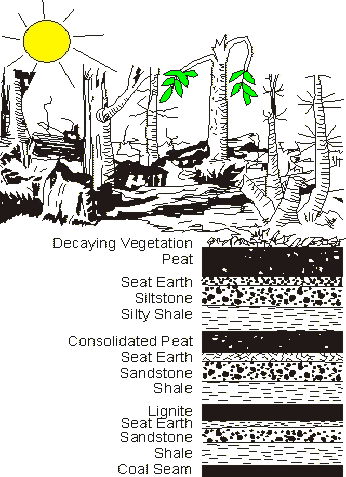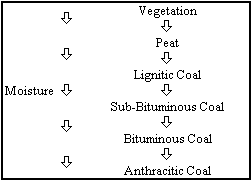 |
It
is generally accepted that coal originated from plant debris including
ferns, trees, bark, leaves, roots and seeds some of which accumulated and
settled in swamps.
This unconsolidated accumulation of plant remains is called peat. Peat is being formed today in marshes and bogs. Layers of peat, covered by sediment receiving heat and pressure from the subsidence of the swamps, went through a metamorphic process called coalification to form coal. The metamorphic process is thought to have occurred in several stages. The conditions of the metamorphic process and the swamps and bogs greatly affected the formation of the coal. Several factors which greatly affected the content, makeup, quality, and rank of the coal were:
Coal first formed from peat has a high moisture content and a relatively low heating value. |
